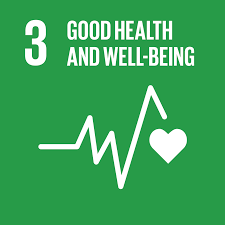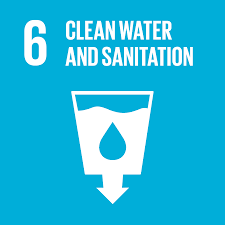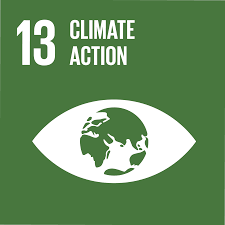De/Forestation
- Kush Rajurkar
- Sep 8, 2020
- 4 min read
Updated: Sep 9, 2020
This article is focused on the following Sustainable Development Goals:
Around 11% of greenhouse emission is caused by mass deforestation around the world, which would be equivalent to emission produced by trucks and cars. Deforestation is edging, soon be one of the biggest climate crises we have ever had. In the process of cutting down a concretion of trees, it exerts a major influence on wildlife, possibly making some species go extinct. At the moment, 30% of our land is covered by trees, however, with the rising demand for infrastructure and food, it makes deforestation a much larger issue.

With the rapid rise in technology and population, it becomes difficult to account for the infrastructure and urbanization. According to the U.N. Foods and Agriculture Organization, the annual rate of deforestation has been 1.3 million km2 per decade. At the start of 1960, there has been a negative decline in relation to the impact on our environment by affecting ecosystems, biodiversity, and the climate(Britannica). Several factors are to blame for deforestation: firstly, the natural factors like parasite diseases and forest fire. Regardless, humans are said to the main cause with expansions like mining, agriculture and infrastructure make up the rest of the factors. We need to realize that forests are the main reason why the human race hasn’t become extinct as of yet; the forest provides us with oxygen and acts as a natural drainage system for carbon dioxide. More importantly, they prevent us from natural disasters and provide habitats to animals. As a global issue, we would be impacted the most as it plays such a crucial part in our lives. We need to make sure that our influence is more impactful than the consequences of deforestation.

Currently, the Amazon rainforest is the only major patch we have remaining. We also need to consider that 5,000 (1,931 square miles) square meters are logged every year. Due to this, selective forests have an improved chance of flammability as it converts wetter forests into drier ones, such as in Indonesia. The burning of the forest not only causes a potential threat to wildlife, but it has recorded infringed levels of air pollution; accounting for SDG 3: Good Health and Well Being. It doesn't stop at air pollution, in Canada the water treatment plant had gotten contaminated due to the carbon which dissolved into the water from the chemical the fire released. This adds on more towards countries with a lack of clean water, SDG 6: Clean Water and Sanitation. At the start of this year, Australia faced a wildfire that had shaken the planet. The water had been contaminated to such an extent that in Canberra they had to rebuild their water treatment plant. To an extent, this shows the impact of deforestation can have in terms of a global context.

Many might think that the ideal solution to this paramount of a problem is forestation, however, we need to consider factors such as overpopulation, space limitations, cost and sometimes we plant a tree that doesn’t fit into the environment. Firstly, we have to compare the difference between afforestation and reforestation. Reforestation is the forestation in locations where they had previously deforested, afforestation is when we forest places where there are no trees. Keeping this in mind, organizations such as ‘Amazon Watch’ and the ‘Canadian Forestry Association’ have raised awareness of deforestation. Alternative organizations such as ‘Rainforest Alliance’ and ‘Trees for Future’ have taken action by forestation, and conservation of wildlife. Another organization, 'Flash Forest' has brought up the idea of using drones to reforest by placing seeds. In a grand scheme of things, organizations won’t be enough to stop deforestation as we individuals need to take our own actions.
Overall, the forest plays a huge role in our daily lives and making sure that we can preserve and protect our forest, SDG 13: Climate Action, so we can save the future generation. In a broader sense, we as humans have a long way to go if we were to combat climate change. We need to stop demanding a change, instead, we need to change.
External Resources
Here are some ways you can help:
Forest- A study app, for every 30 minutes you study they will plant a tree.
Advocate the use of Sustainable Products
Try to reduce meat intake
Join a local organization (Nigeria- Nigerian Conservation Foundation)
Here are some sources to raise awareness about deforestation:
Works Cited
“Be a Conservationist - Deforestation.” Revolution, therevolutionmovie.com/index.php/change-the-world/be-a-conservationist/deforestation/.
Canadian author and photographer Ed Struzik has been writing on environmental issues for three decades. He is the author of Firestorm: How Wildfire Will Shape Our Future and a fellow at the Institute for Energy and Environmental Policy at Queens University. More about Ed Struzik →, et al. “How Wildfires Are Polluting Rivers and Threatening Water Supplies.” Yale E360, e360.yale.edu/features/how-wildfires-are-polluting-rivers-and-threatening-water-supplies.
“Deforestation: 11 Facts You Need to Know.” Deforestation - 11 Facts You Need to Know, www.conservation.org/stories/11-deforestation-facts-you-need-to-know.
“Goal 15 | Department of Economic and Social Affairs.” United Nations, United Nations, sdgs.un.org/goals/goal15.
Pimm, Stuart L. “Deforestation.” Encyclopædia Britannica, Encyclopædia Britannica, Inc., 24
Mar. 2020, www.britannica.com/science/deforestation.
Slavikova, Sara Popescu. “15 Strategies to Reduce Deforestation.” Greentumble, 29 Aug. 2019, greentumble.com/15-strategies-to-reduce-deforestation/.







Comments